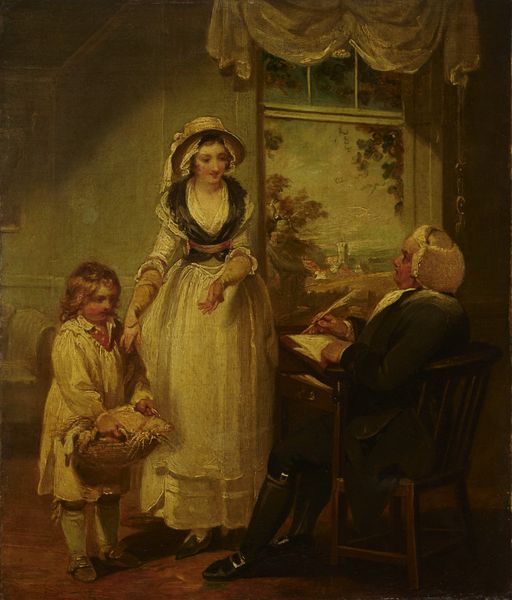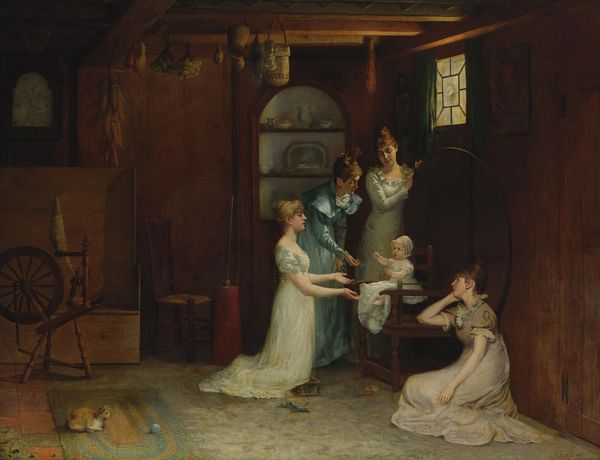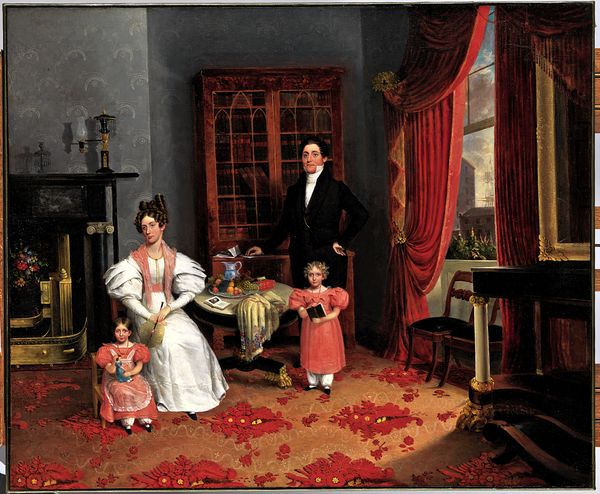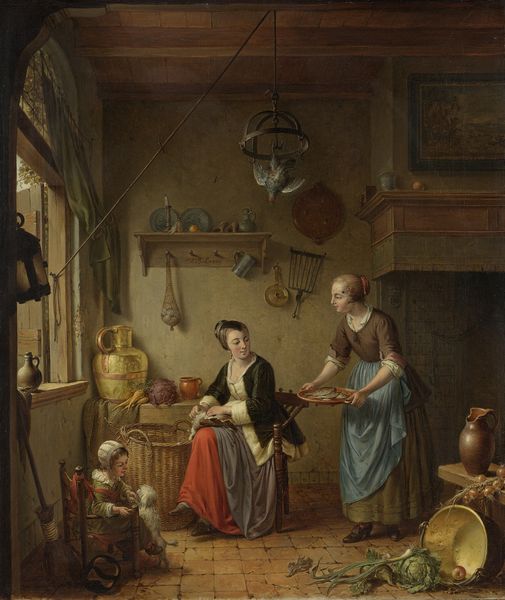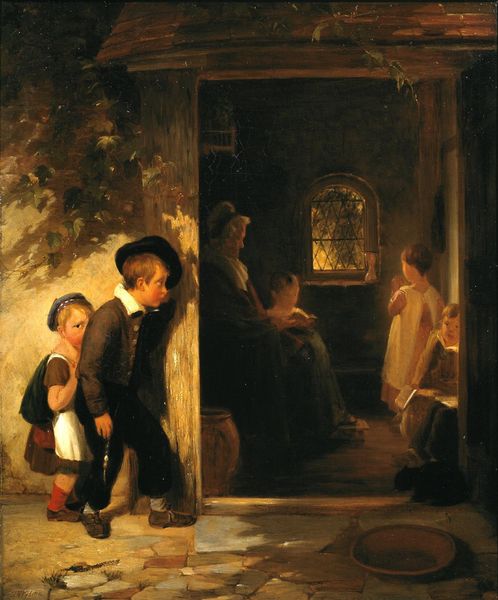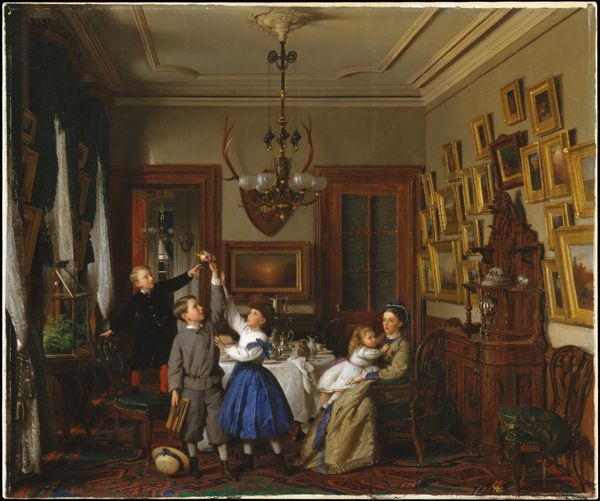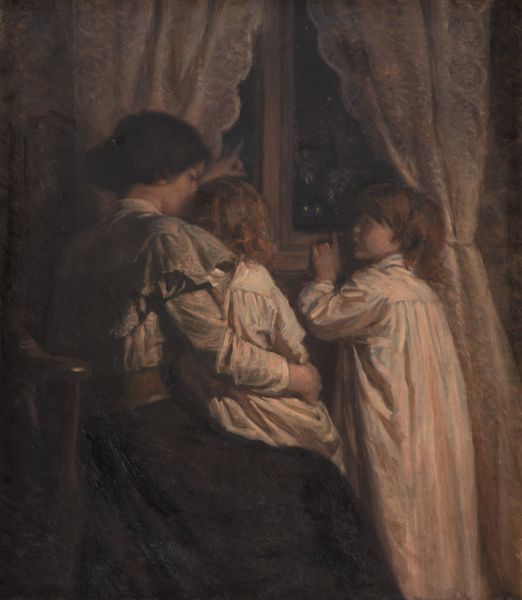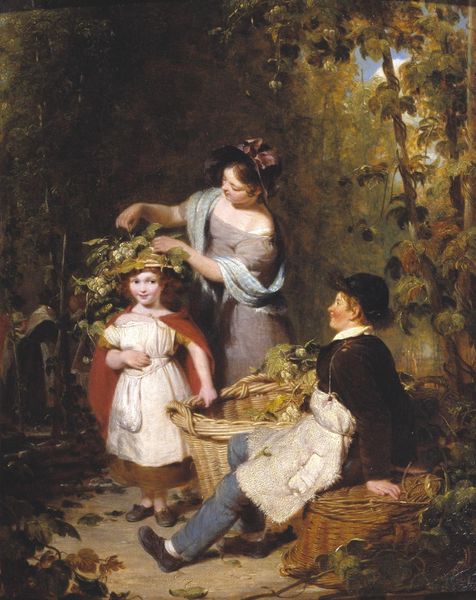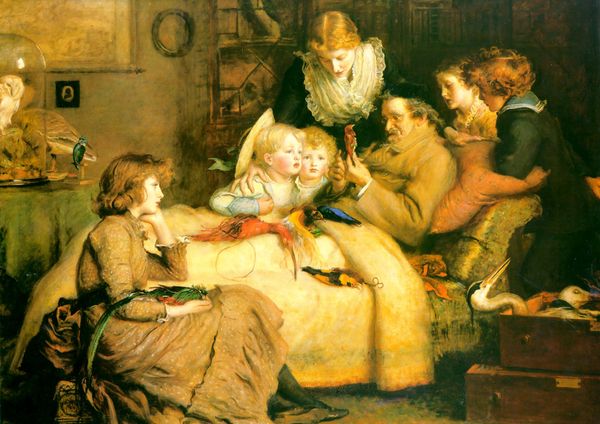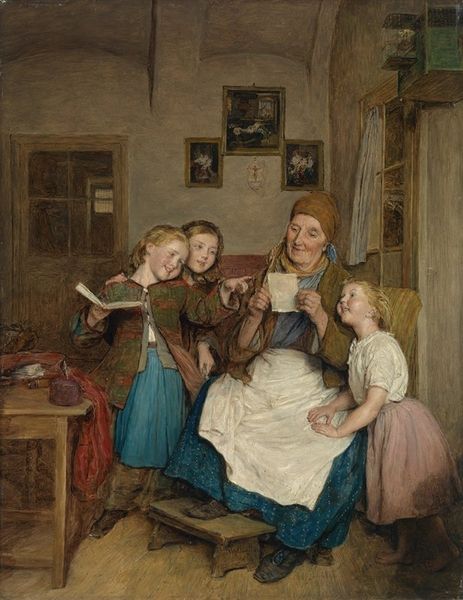
The Goldfish Bowl (Mrs. Richard Cary Morse and Family) 1835
0:00
0:00
painting, oil-paint
#
portrait
#
gouache
#
neoclacissism
#
painting
#
oil-paint
#
oil painting
#
group-portraits
#
genre-painting
#
academic-art
#
watercolor
Copyright: Public domain
Editor: This is "The Goldfish Bowl (Mrs. Richard Cary Morse and Family)," an 1835 oil on canvas by Samuel Morse. It's striking how the figures seem posed within a classical interior that feels almost stage-like. What stands out to you in this piece? Curator: It's fascinating to see Morse, known for his contributions to the telegraph, also engaging in portraiture. This work exemplifies how early American art was grappling with European Neoclassical traditions while attempting to forge a distinct identity. Notice the deliberate architectural setting and the arrangement of the figures. Where do you think Morse places this family in the broader cultural narrative of the 19th century? Editor: Well, given the grand setting and the mother’s elegant dress, it feels like Morse is portraying a family of high social standing, perhaps subtly asserting their place in the emerging American aristocracy. Curator: Precisely. The goldfish bowl itself becomes symbolic, doesn't it? A contained world, much like the domestic sphere where women and children were often confined during this period. Think about the societal expectations placed upon women of this class and how the objects within the painting—the book, the cradle, the architectural setting—reinforce those ideas. Editor: That's insightful. It makes me reconsider the quiet, domestic scene as a carefully constructed statement about social roles. Curator: And also, perhaps, Morse’s own ambition. This portrait not only presents the Cary Morse family, but also, on a more fundamental level, positions him as a sophisticated artist capable of working within established traditions. The politics of imagery are always at play, consciously or otherwise. Editor: This painting is richer and more complex than I initially perceived! Considering the social and political contexts really brings out new layers of meaning.
Comments
No comments
Be the first to comment and join the conversation on the ultimate creative platform.
